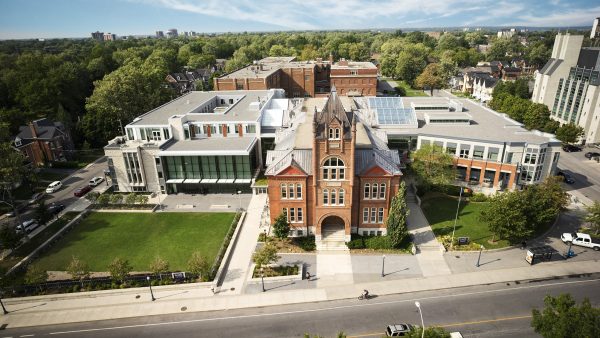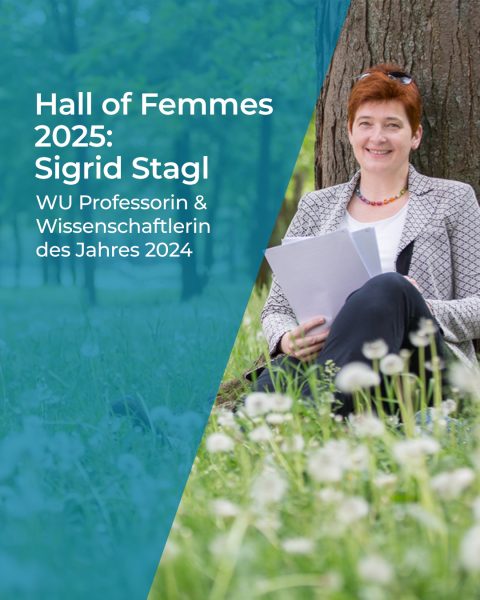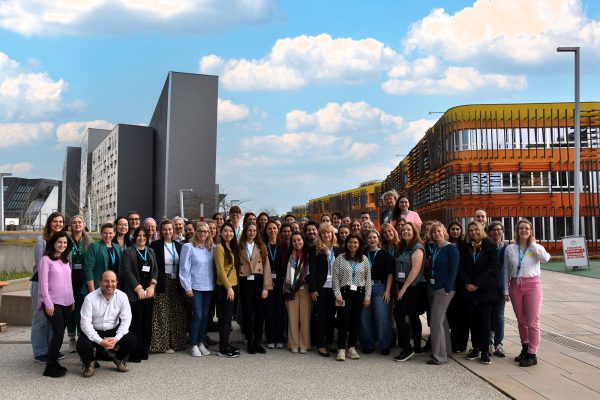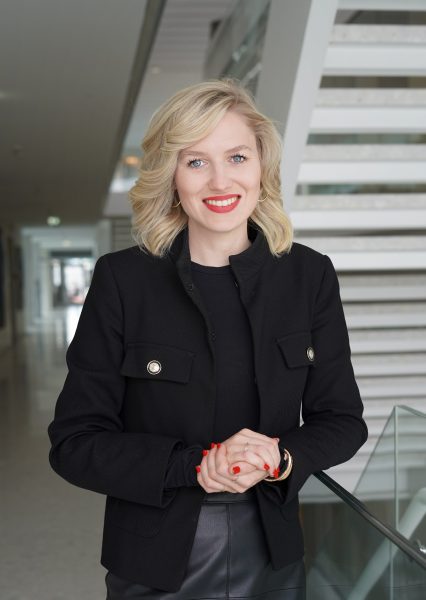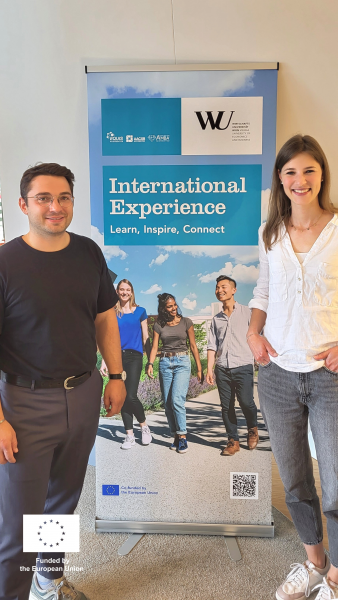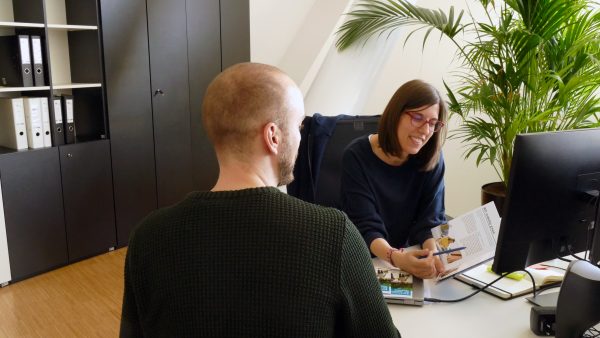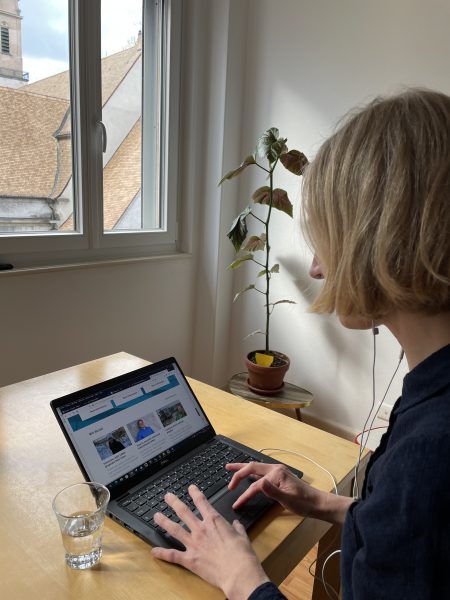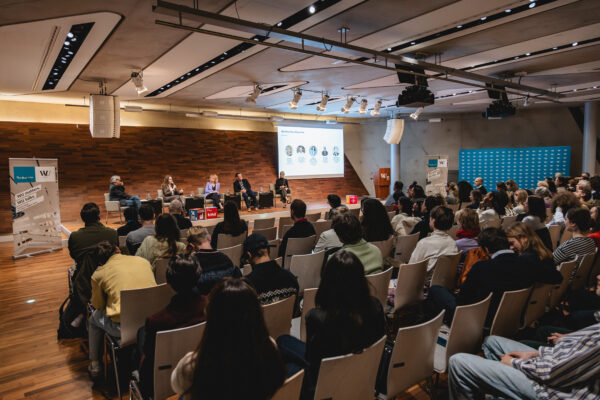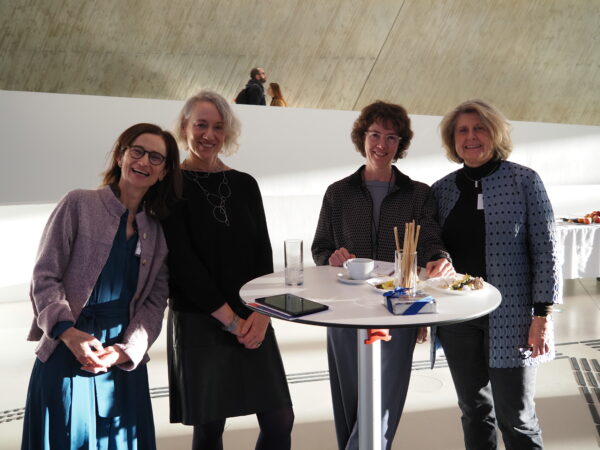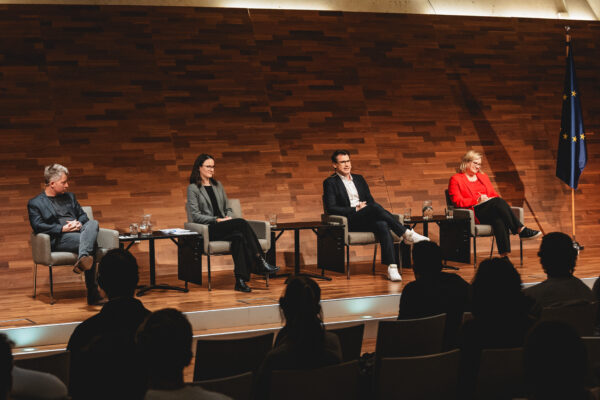Women and gender equality at WU
Under the title “Women creating knowledge – 35 Years of women’s work at WU Vienna,” on Nov. 18, 2025, the editors of the newly published volume – Regine Bendl, Charlotte Khan, and Angelika Schmidt – invited guests to reflect on 35 years of initiatives advancing women and gender equality at WU Vienna University of Economics and Business.
Looking back at pioneers
Professor Regine Bendl opened the event by honoring the women who paved the way at WU – from the first female academic staff member to the first female library director, the first female rector, and the first woman to be named scientist of the year. She reminded the audience that gender equality efforts have always been driven by principles of justice, participation, and recognition. „The question is: How can we create conditions that allow women to realize their potential?“
Vice-Rector Martin Winner followed with historical milestones. In 1917, the first woman graduated from WU; in 1932, the first female doctoral degree was awarded; and in 1977, the first habilitation by a woman was completed. Winner noted that in 1989 – just a year after he began his own studies – the first female professor, Renate Rathmayr, was appointed at WU. Today, women hold about 34% of professorships. Still, Winner emphasized that equal opportunity is about more than numbers: it requires an inclusive organizational culture where diversity is visible and valued.
Progress cannot be taken for granted
In the following discussion, moderated by Christine Mattl, the panel explored WU’s progress in greater detail. Angelika Schmid, Professor of Change Management and Management Development, highlighted the influence of early feminist initiatives in the 1990s, which helped lay the groundwork for the later institutionalization of gender equality structures. Today, gender equality and equal opportunities are firmly embedded at the university.
All panelists agreed that these achievements should not be taken for granted. Challenges persist for early-career researchers, including fixed-term contracts. Supporting young female scholars, e.g. by giving them space to organize and question structural constraints, remains essential. Charlotte Khan, chair of the Equal Opportunities Committee, commented:
“It’s about women’s work within a patriarchal university.”
She pointed to a symbolic example: Among the 27 portraits in the LC’s gallery of rectors, only one depicts a woman.
Reality check: women in academia
The second panel began with reflections from Renate Rathmayr, who spoke about navigating gender hierarchies in academia: “It’s not just professional competence that matters.” She recalled being greeted with “Good morning, Mr. colleague” when she arrived as WU’s first female professor.
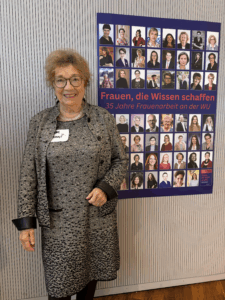
Renate Rathmayr, first professor at WU Vienna
Young researchers continue to face difficult conditions. Jelena Cerar, assistant professor at WU, described the need to prove herself before being taken seriously, and addressed a question familiar to many women in her generation: “How can academia and motherhood be combined?” Despite these obstacles, she also emphasized the agency of female scholars: “We as female researchers at WU are not here only to fit into the system, but also to shape it.”
In closing, Rector Rupert Sausgruber commented on WU’s progress toward gender parity:
“We are still far from our goal, but we have made great progress.”
The university’s mission is clear: to generate relevant and reliable knowledge – something that cannot be achieved when half the population is underrepresented. Professor Tina Wakolbinger concluded: “There are many opportunities for women in academia, but the path is not an easy one.”





